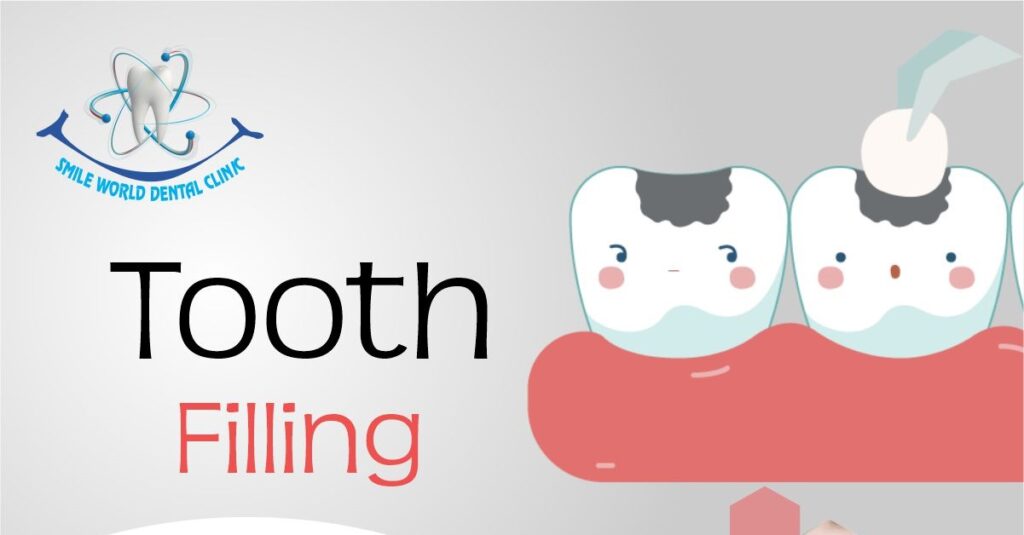What is Tooth Filling?
To treat a cavity your dentist will remove the decayed portion of the tooth and then “fill” the area on the tooth where the decayed material once lived. Fillings are also used to repair cracked or broken teeth and teeth that have been worn down from misuse (such as from nail-biting or tooth grinding).
Types of Dental Filling Materials
Today, several dental filling materials are available. Teeth can be filled with gold, porcelain, silver amalgam or tooth-colored, plastic and glass materials called composite resin fillings. The location and extent of the decay, cost of filling material and your dentist’s recommendation assist in determining the type of filling that will best address your needs.
Advantages and Disadvantages of Dental Fillings
Gold Filling
Advantages:
- Longer Durability
- Strength
- esthetics
Disadvantages:
- Expensive
- Additional office visits
- Galvanic shock may occur
Silver Fillings (Amalgams)
Advantages:
- Longer Durability
- Good Strength
- Less Expensive
Disadvantages:
- Poor aesthetics
- Destruction of more tooth structure
- Allergic reactions may occur
- Discoloration to the surrounding tooth structure.
Tooth-colored composite fillings
Advantages:
- Aesthetics
- Chemically bond to tooth structure
- Composite fillings can also be used to repair chipped, broken or worn teeth
- Sometimes less tooth structure needs to be removed compared with amalgams when removing decay and preparing for the filling.
Disadvantages:
- Lack of durability
- Increased chair time
- Expensive as compare to amalgam
- Composite materials can chip off the tooth
In addition to tooth-colored, composite resin fillings, two other tooth-colored fillings exist – Ceramics and Glass Ionomers.
CERAMICS – which are made most often of porcelain, are more resistant to staining than composite resin material but are also more abrasive.
GLASS IONOMER is made of acrylic and a specific type of glass material. This material is most commonly used for fillings below the gum line and for fillings in young children. However, this material is weaker than composite resin and is more susceptible to wear and prone to fracture. Glass ionomer generally lasts 5 years or less with costs comparable to composite resin.
What are Indirect Fillings?
Indirect fillings are similar to composite or tooth-colored fillings except that they are made in a dental laboratory and require two visits before being placed. Indirect fillings are considered when not enough tooth structure remains to support a filling but the tooth is not so severely damaged that it needs a crown.
There are two types of Indirect fillings – INLAYS & ONLAYS
Indirect Inlays are similar to fillings but the entire work lies within the cusps (bumps) on the chewing surface of the tooth. Indirect Onlays are more extensive than inlays, covering one or more cusps. Onlays are sometimes called partial crowns.
There are two types of Direct fillings – DIRECT INLAYS & ONLAYS
It follow the same processes and procedures as the indirect. The difference is that direct Inlays and Onlays are made in the dental office and can be placed in one visit.
What is Temporary Filling and why would we need one?
Temporary fillings are used under the following circumstances:
- For fillings that require more than one appointment -for example, before placement of gold fillings and for certain filling procedures (called indirect fillings) that use composite materials.
- Following a root canal.
- To allow a tooth’s nerve to “settle down” if the pulp became irritated.
- If emergency dental treatment is needed (such as to address a toothache).
How should we care for our teeth with fillings?
To maintain your fillings, you should follow good oral hygiene practices. Visiting your dentist regularly for cleanings, brushing with a fluoride containing toothpaste, and flossing at least once daily. If your dentist suspects that a filling might be cracked or is leaking, he or she will take X-rays to assess the situation. If your tooth is extremely sensitive, if you feel a sharp.








